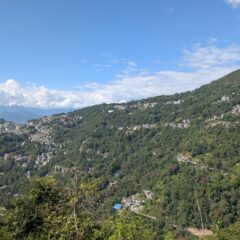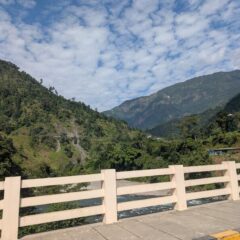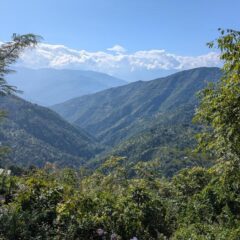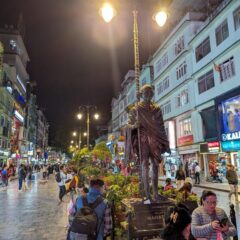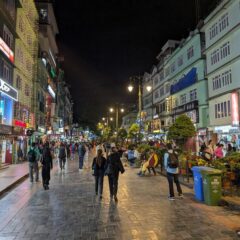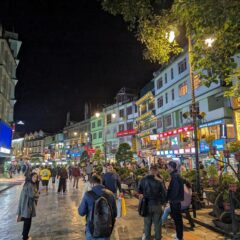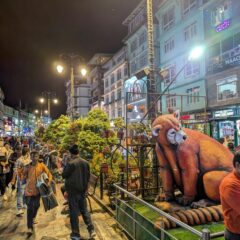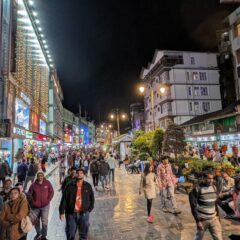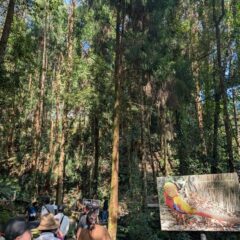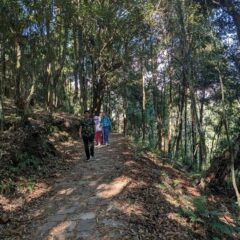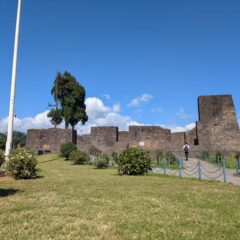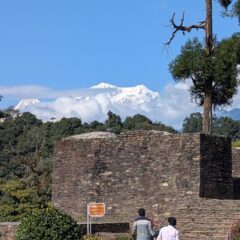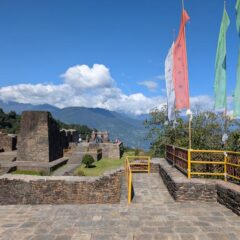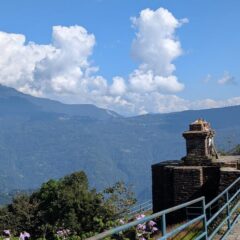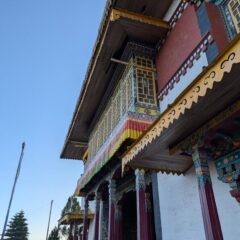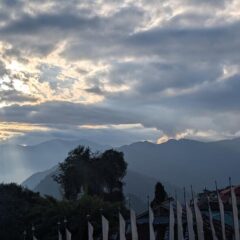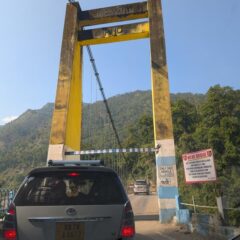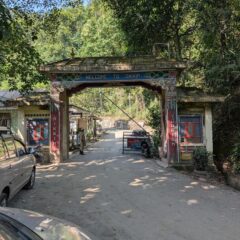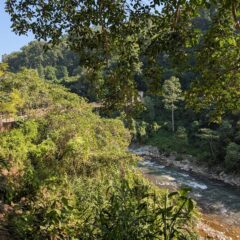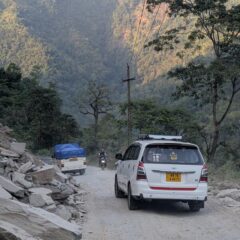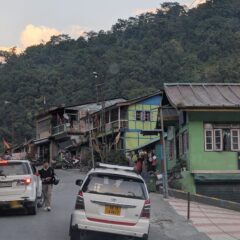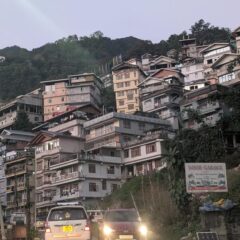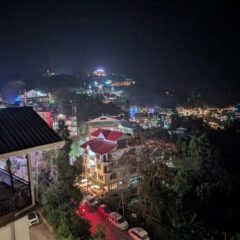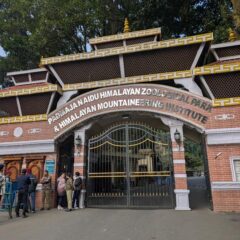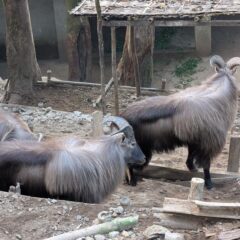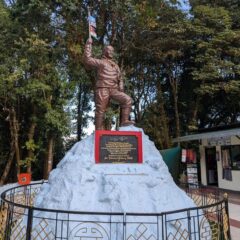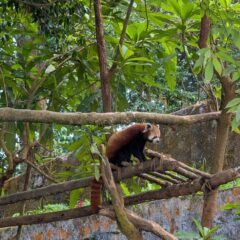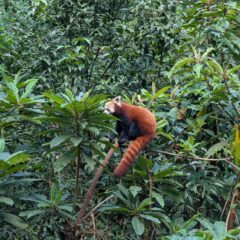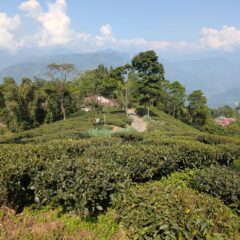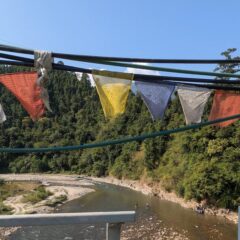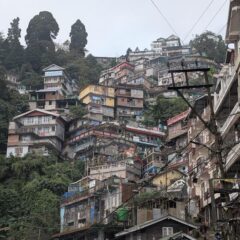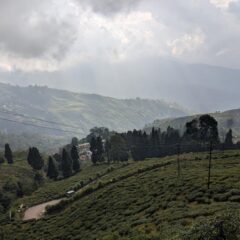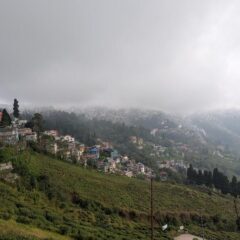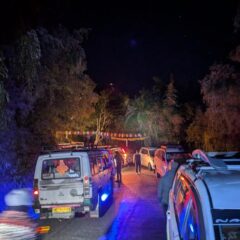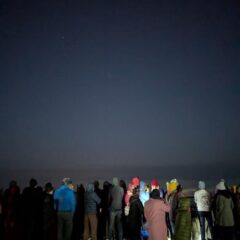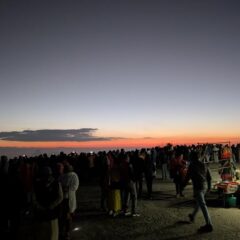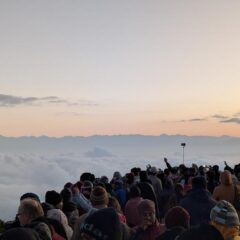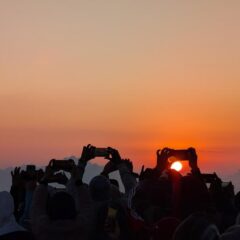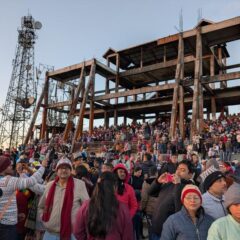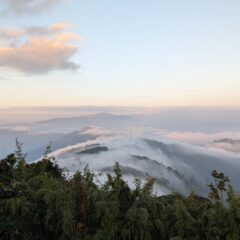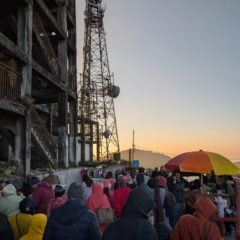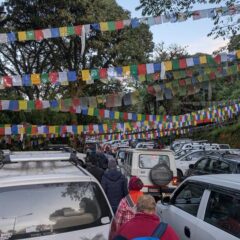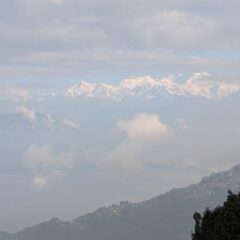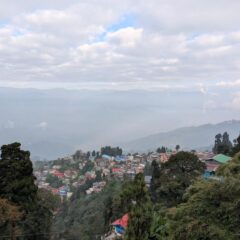The rest of the day saw us navigating the winding mountain roads of Sikkim – very much to the despair of a chicken that ended up as pâté with tire pattern (the dispute with the farmer was settled at 200 rupees). We finally made it to Gangtok around 16:30 – and after some rest were out and about again to get to MG Road, the city’s pedestrian area for some shopping, the chase for a bar without (overly load) live music and – of course – another portion of Gobi Manchurian.
Tag Archives: India
A side trip into Hinduism
Gallery
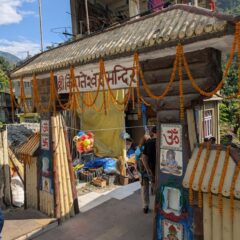
This gallery contains 12 photos.
Today it was time to leave Pelling behind and make our way to Gangtok, the capital of Sikkim – a total distance of 125km was ahead of us with plenty of ups and downs and a driving time of about … Continue reading
East of Pelling …
From Disneyland we made it back to town for lunch – with Gobi Manchurian being a popular dish today (and yummy it was).
Our program continued in the afternoon with a trip to the bird park. But instead of visiting our avian friends, we took the other trail leading into the forest – to eventually get to the palace ruins of Rabdentse – Rabdentse used to be the capital of the Kingdom of Sikkim from 1670 until 1814. Views from here were once more amazing – with Kangchenjunga once more clearly visible.
Well – the day was not over yet … another monastery was waiting for us – Pemayangtse Monastery, established in 1705 and overlooking the ruins of Rabdentse. During a tour we were shown around the monastery – before making it back to town and the hotel again.
From Tranquillity to Disney World
Gallery
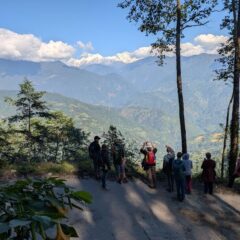
This gallery contains 15 photos.
After the long drive yesterday we had a somewhat active day today. After breakfast we were picked up by the cars for a short drive to the starting point for a short walk (at less than a mile certainly not … Continue reading
Into the Kingdom …
After a drive of about 25km or 1.5 hours downhill on winding roads we had reached the Raman river and as such the border between the state of West Bengal and Sikkim around midday. We crossed the bridge and during a short break our documents were checked and we got stamped into Sikkim.
A (lengthy) lunch in nearby Sisney (and a nearly lost cell phone) later, another ~45km were ahead of us, first following the river and then back to winding roads, heading up into the mountains towards Pelling, where we arrived around sunset.
Leaving Darjeeling
Today saw us leaving Darjeeling – but not without checking out the local zoo and the Himalayan Mountaineering Institute (HMI).
The HMI conducts courses in mountaineering; for the general public it features a museum showcasing various achievements in mountaineering – from first ascents (incl. of course Mt.Everest) to achievements in Antarctica – all complete with equipment of the time of the respective trips. The maps shown here are interesting, as they show the historical border and political situation; a statue of Sir Edmund Hillary sits in front of the museum.
The zoo is right next to the HMI, it features plenty of the local fauna – from mountain animals (as the Himalaya Tahrs in the photo below) to forest dwellers. The stars here are the Red Pandas – with the zoo successfully engaged in a breeding program.
From the zoo it was right onto the road for our drive towards Sikkim. En-route we had a short stop at Tukvar Tea Garden to take in the great views and serene surroundings.
All U Need is Tea … Darjeeling that is!
If your association with Darjeeling is more on the (Special Finest) Tippy Golden Flowery Orange Pekoe side of things – well, it was finally time to have a closer look at camellia sinensis during a visit of a tea estate.
First we had to make our way back to Darjeeling (once more through horrendous traffic) and through town for us to get to the Happy Valley Tea Estate. After a downhill walk through the tea garden, we had a guided tour around the small estate museum, followed by a tour through the tea processing facility (no photography here). While the tour was informative, there was mostly not too much to see (this was very different during my visit of the tea factory in the Nilgiris).
After the visit we made it back up to the main road for a transfer into town for a proper tea tasting and an opportunity to buy some of the dried and fermented leaves.
Well – and as it is a short walk from tippy to tipsy, we continued straight from the tea tasting to yesterday’s restaurant for more great food and the best G&Ts of the trip. I call that appropriate behavior in a former hill station of the empire.
By Steam Train to the first Monastery …
Gallery
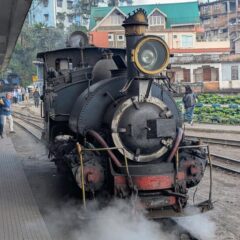
This gallery contains 12 photos.
After breakfast in the hotel we made it to Darjeeling’s train station, to catch the famous toy train for the 7km trip from Darjeeling to Ghum (India’s highest train station). The Darjeeling Himalayan Railway was built back in the late … Continue reading
Tiger Hill Sunrise
Today was a very early morning, with us leaving the hotel around 4am to make our way to the Tiger Hill viewpoint – a drive of about one hour. We were here to see the sun rise over the Eastern Himalaya and break its light over some of the giants to the North-West, with Khangchendzonga (at 8586m the world’s third highest) being the most prominent here.
This obviously is a major tourist attraction and the place was packed with other tourists (and per our guide this was not even a too busy day) – it was nevertheless a good thing to do – and the traffic jam the way down probably is just part of the quintessential Indian experience.
Up to Darjeeling …
Gallery
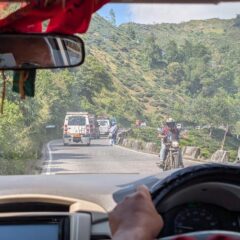
This gallery contains 12 photos.
There was not much time in Kolkata, as we were already leaving town in the early morning to catch the one-hour flight to Bagdogra. Here the group got split over a few cars, which were to be our transport for … Continue reading
